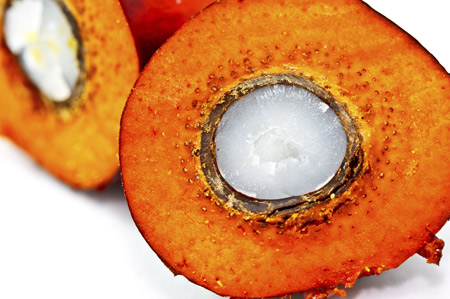In Palm-Oil Market, Optimism Over Biodiesel Subsidy Fades
Category: Oilseeds
 (Wall Street Journal) – Indonesia’s renewed push this month to increase the use of biofuels made from palm oil initially helped pump up prices of the commodity. But that optimism is already fading, as traders reckon with an overall weak backdrop in demand for palm oil, which is used in products ranging from lipstick to biscuits and detergents.
(Wall Street Journal) – Indonesia’s renewed push this month to increase the use of biofuels made from palm oil initially helped pump up prices of the commodity. But that optimism is already fading, as traders reckon with an overall weak backdrop in demand for palm oil, which is used in products ranging from lipstick to biscuits and detergents.
The global benchmark palm-oil futures price traded on the Bursa Malaysia Derivatives exchange jumped nearly 10% in early February after the Jakarta government said it will more than double the subsidy for biodiesels to 4,000 rupiah a liter (31 U.S. cents), from 1,500 a liter now. The increase, announced Feb. 2, is expected to take effect as soon as next month. Biofuels in Indonesia are made primarily from a palm-oil feedstock.
Indonesia, the world’s largest producer and consumer of palm oil, acted partly in response to the slump in global crude-oil prices, which are down sharply since last summer. That has made crude-based gasoline much cheaper relative to other fuels, knocking hopes for higher biofuel usage off course.
Having hit an 18-month high of 2,916 ringgit ($803) a ton in March, palm-oil futures tumbled to a 5½-year low of 1,914 ringgit a ton last September. They then hit a six-month high in January due to concerns about floods hitting production, before falling back on slowing demand. With the new incentives from Indonesia, prices hit a three-week high on Feb. 9, but have since slipped 4.7% to end at 2,246 ringgit a ton in Malaysia on Wednesday.
Palm-oil traders were euphoric in early 2014 when Indonesia and Malaysia, which together produce 85% of the world’s supply of the commodity, trumpeted ambitious targets for more biodiesel consumption in power generation and transport.
Indonesia had aimed to consume 3.4 million metric tons of biodiesel last year. But the country’s actual consumption was only around half that level, according to the Indonesian Palm Oil Association, known by its Indonesian abbreviation Gapki.
In addition to falling crude prices, poor infrastructure hasn’t helped, said Aurelia Britsch, a commodities analyst at Business Monitor International. Many old vehicles can’t run on biodiesel, and shipping the fuel between the thousands of islands that make up Indonesia is costly.
Meanwhile, prices of a key palm-oil substitute product made from soybeans—a more established oilseed in many parts of the world—have been in the doldrums since last summer. The fall in soy prices would likely have kept total demand for palm oil flat this year, before taking into account the effect of the Indonesian biofuel subsidy, said Pawan Kumar, a Singapore-based analyst with Rabobank.
Any boost in palm-oil prices due to Indonesia’s increase in biofuel subsidies could encourage more food producers to switch to using soybean oil. Palm oil normally trades at a discount to soybean oil, but the discount has narrowed by around 25% since last September.
Data from the Malaysian government—regarded as the most timely indicator of palm-oil demand and supply—showed January palm-oil exports from Malaysia fell to a seven-year low. Export estimates from private cargo surveyors also show shipments have fallen in February from the same period a month ago.
Still, the government’s subsidy increase this year has given the palm-oil industry hope again. Golden Agri-Resoures Ltd. , the country’s largest palm-oil producer by acreage, is building a biodiesel plant with a capacity of 300,000 tons a year, said Richard Fung, the company’s investor-relations director.
If the subsidy works “as planned,” biodiesel consumption this year could still hit 3.3 million tons, sending domestic palm-oil consumption to 11 million tons, according to Gapki’s executive director, Fadhil Hasan. That would be equivalent to about a third of Indonesia’s expected annual palm-oil production, based on U.S. Department of Agriculture forecasts.
Even with the subsidies, the amount of Indonesian palm oil used in biofuels as a percentage of total palm-oil output will lag behind the proportion of U.S. corn crops used in ethanol production. About a third of corn grown in the U.S. is used to produce biofuels, thanks in large part to generous subsidies over the years and federal rules requiring ethanol to be added to gasoline, policies that in turn have helped lift corn prices.
It is unclear whether increased biofuel consumption domestically in countries like Indonesia can make up for weaker demand in large markets like China and the European Union, where low crude prices have also encouraged consumers to switch back to using gasoline more. Biodiesel shipments from Indonesia dropped to 186,000 tons in October and November, 36% lower than in the same period the year before, industry publication Oil World said in a report earlier this month.




